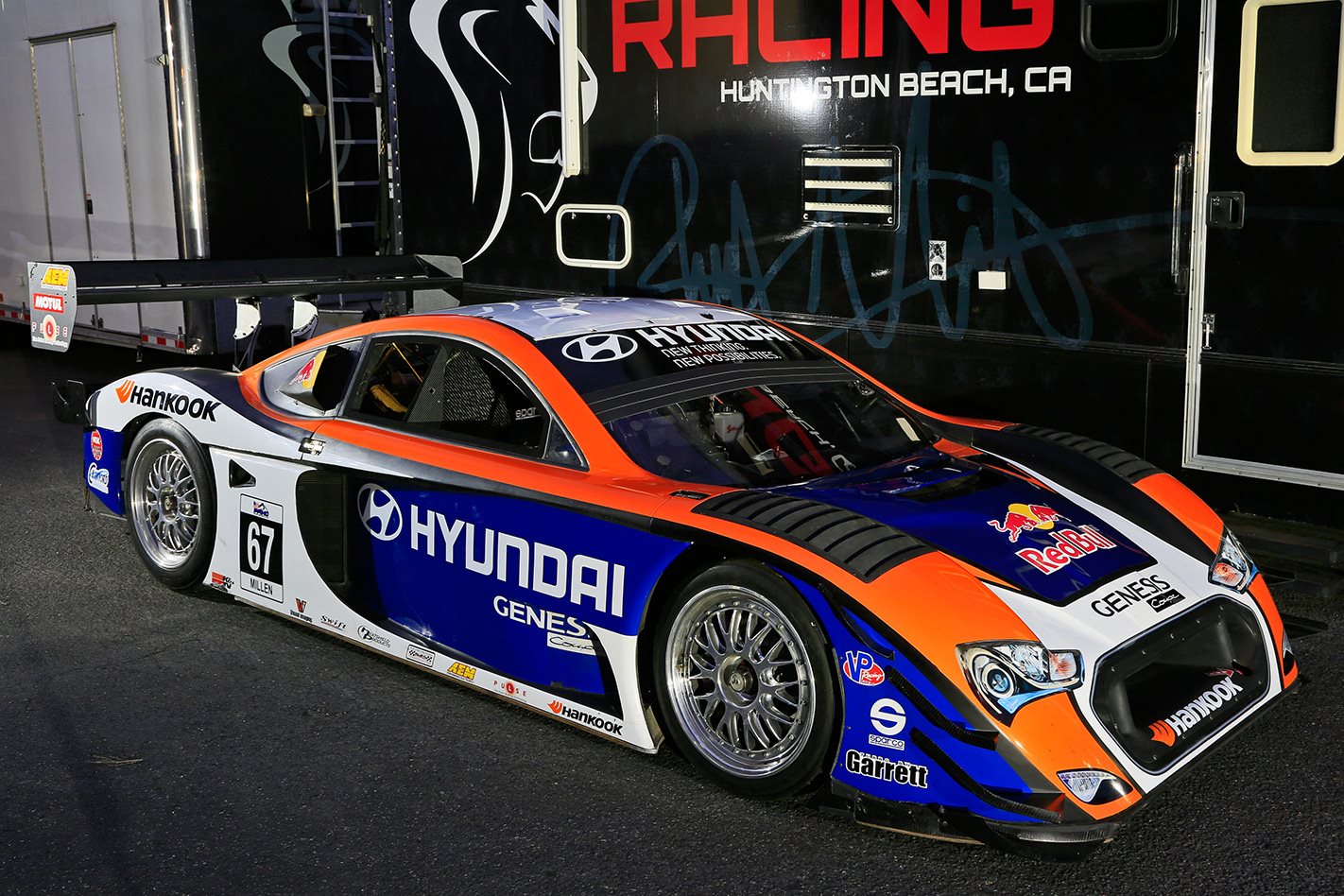Forget Peugeot and Sebastian Loeb for just a second.
While the record-annihilating time set by the WRC legend rightfully garnered the lion’s share of the press, we can’t help but feel that an awesome story was missed.
Rhys Millen has taken a bunch of silverware home from the Pikes Peak International Hill Climb and is the first to admit he never considered himself a fighting chance against Peugeot. “They were in a class of their own – nobody had anywhere near their program’s budget or support and their race was really just against the mountain,” the 2012 PPIHC outright winner says.
Still, the Kiwi ex-pat and his Rhys Millen Racing team weren’t going to walk away from over 30 years of participation at Pikes Peak simply because some baguette- and snail-gobbling beret-wearers were turning up with a Le Mans car dressed as a 208. But they had a problem: they needed support for a racing program.
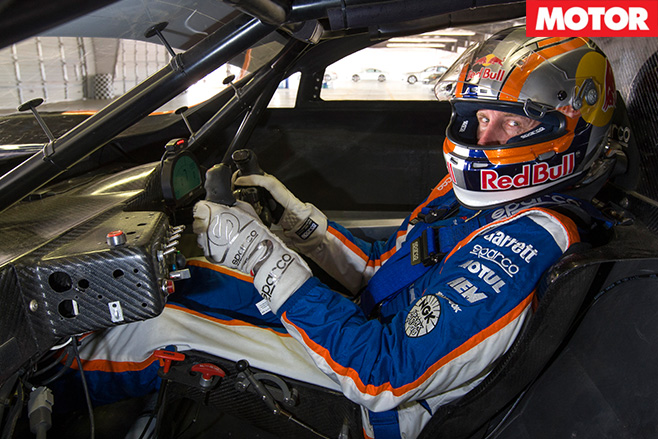
Once they did put pen to paper, RMR only had six months to build and test a car from scratch. With the Colorado course now fully sealed, cars built to race on the dirt/tar mix would not be competitive against the new breed of tarmac terrors.
They were up against a manufacturer with what was estimated to have been a $5 million budget, a car built using decades of experience at Le Mans, WRC and F1, the world’s greatest WRC driver in the hot seat and the marketing clout of Red Bull.
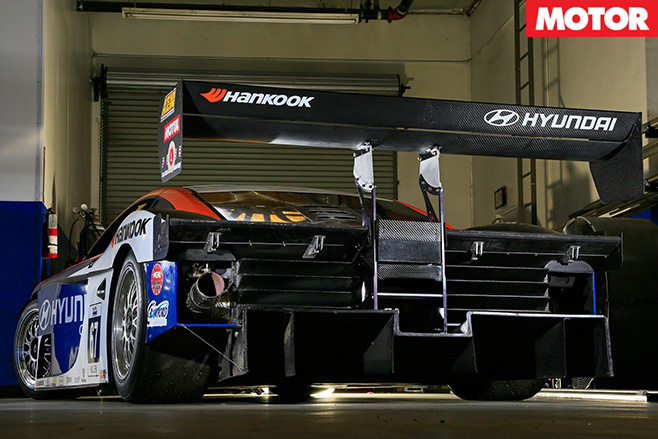
“We just didn’t have time to build something from the ground up, so we started looking for rolling chassis packages that would suit the engine package we already had,” Rhys says. The motor he refers to is the 3.8-litre V6 from the Genesis coupe, which he’d run previously in turbo form on his Genesis drift car.
To reach his goal of eight minutes, Rhys knew he needed nearly 750kW pushing no more than 1200kg. RMR replaced the weak stock pistons and conrods with forged items to handle boost, and pushed the motor from 3.8 to 4.1 litres.
Surprisingly, apart from aforementioned internal mods and adding a custom-designed four-stage dry sump oil system, twin 1000cc fuel injectors per-cylinder, AEM ECU and custom piping, the engine is stock. This is impressive when you consider it can produce between 595-710kW and a hefty 1150Nm of torque!
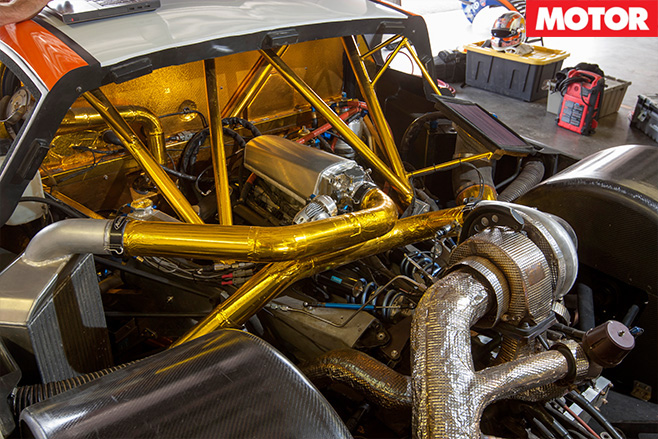
Many engine bay components were covered in gold reflective wrapping to help dissipate heat, while the AEM ECU controls a water-injection system to help cool the air charge and reduce detonation. This allows the V6 to run a hotter tune, and also protect it from self-destruction.
“We didn’t have time to test, so a lot of the parts on the car were specced like that, or modifications done just to safeguard against failure. The intercooler is that size because we could only estimate the size of the core we needed, so we went larger than required because we couldn’t afford downtime to fix things when we needed to be fine-tuning the set-up.
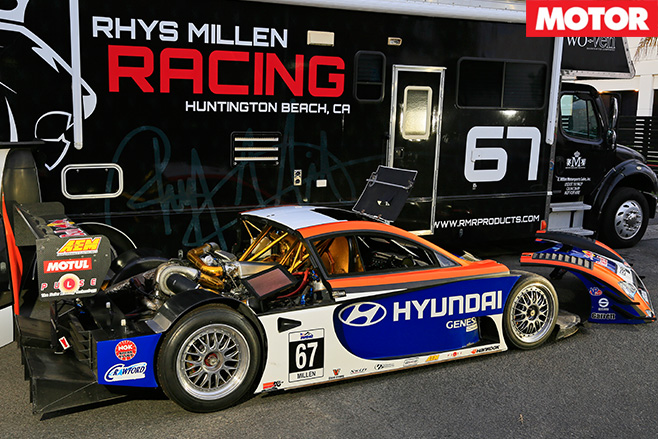
While the motor was sorted the RMR team figured a Daytona Prototype would be the best base for their challenger. The PM580T is actually a Crawford DP03 under the Genesis shell, built in 2005 for the Rolex Grand Am series run in the US.
While Rhys would have ultimately preferred a four-wheel drive platform, the budget and development time didn’t allow for it. “Four-wheel drive would add a lot of weight and complexity to this car, but it’s still a huge performance advantage. The speed Loeb was pulling out of corners was astounding – he could just stand on it and go, while I had to feather my way through.”
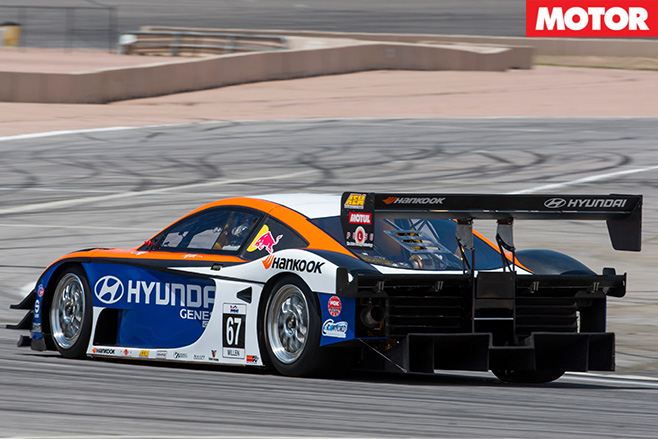
Due to rule differences between PPIHC and Grand Am there were changes required to the roll cage and A-pillar structure. The angle of the windscreen was lengthened, the top bar brought further forward, while extra lower bars were added to the cage. As the car was meant to represent the ultimate Hyundai Genesis, a custom body was required and was whipped up by RMR’s composite technology arm, Wo-Ven.
The DP03 came with the Xtrac five-speed DP386 sequential transaxle Rhys used at Pikes, which was rebuilt with shorter gearing to bring the top speed down to 225km/h, which Rhys hit several times on his way up the mountain.
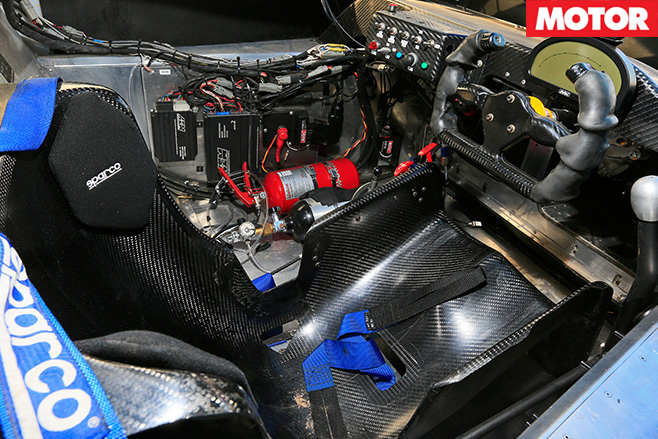
“There are probably 20 places on the course where I’m back in first gear and using all the lock available just to get around the hairpin,” Rhys says. The DP’s 18 degrees of lock wouldn’t cut it, so the steering system was altered to allow a full 24 degrees. The hydraulic power assistance was replaced with an electric unit from a Hyundai Sonata. This reduces parasitic drag on the motor, weight and potential problems from leaking or overheated fluid.
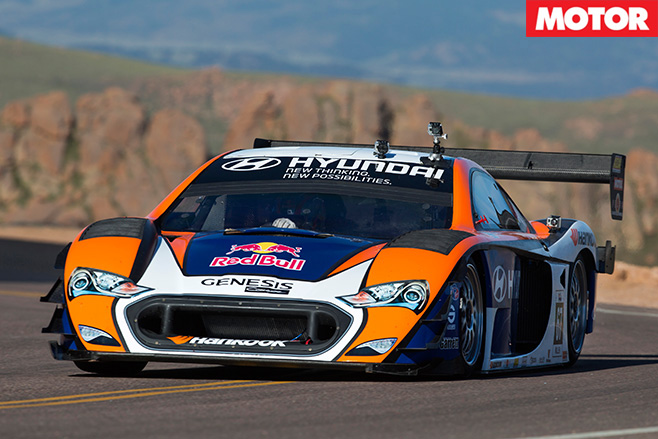
The PM580T was finished around mid-May and, after spending a couple of days on a chassis dyno, was shipped 130km out to Hyundai’s US proving ground for initial testing. Tweaks to the gear ratios and suspension were dialled in before the team packed up in July and headed for Colorado.
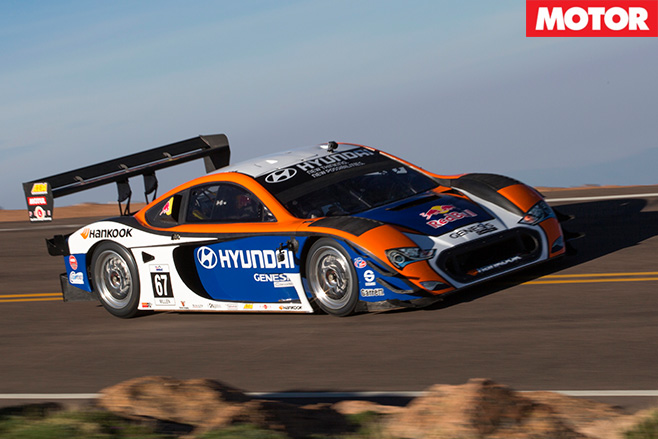
“Tyre companies just don’t make a soft enough compound for the race – you can’t keep the temperature in the tyres even with the softest tyres they make. Still, it’s quite neutral to drive, with a slight emphasis on being loose in the rear-end,” Rhys says. “This is because, as you climb higher, the tyres go cold and give a tendency to push [understeer]. Being on the loose side means the car will generally remain neutral in those sectors.”
In the end, while he couldn’t get near Loeb’s 8min 13sec time, Millen was head and shoulders above the other Unlimited contenders, besting third place Jean-Phillipe Dayraut by 40 seconds with a time of 9min 01.192sec.
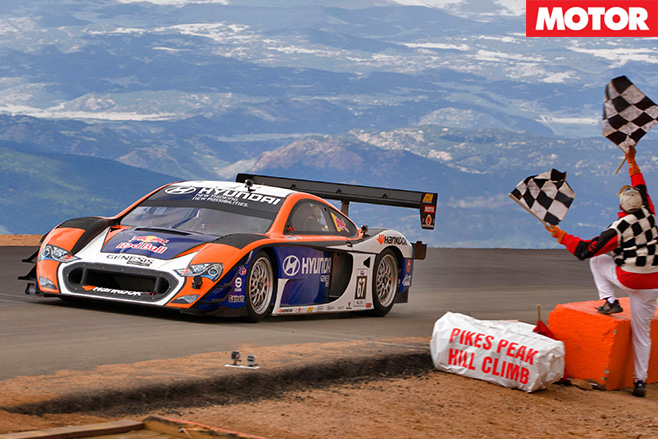
Peugeot has already said it’s not returning in 2014, so hopefully we see RMR come back to the mountain and break through the nine-minute barrier.
| Specs | u00a0 | u00a0 | u00a0 | u00a0 |
| u00a0 | u00a0 | u00a0 | u00a0 | u00a0 |
| Body | u00a0 | u00a0 | u00a0 | 2-door |
| Drive | u00a0 | u00a0 | u00a0 | rear-wheel |
| Engine | u00a0 | u00a0 | u00a0 | 4.1 litreu00a0Lambda DOHC V6 |
| Engine Mods | u00a0 | u00a0 | u00a0 | RMR forged pistons, connecting rods, inlet plenum, four-stage dry sump set-up, AEM ECU,u00a0MoTeC data-capture |
| Power | u00a0 | u00a0 | u00a0 | 710kW |
| Torque | u00a0 | u00a0 | u00a0 | 1150Nm |
| Power-To-Weight | u00a0 | u00a0 | u00a0 | 641kW/tonne |
| 0-100km/h | u00a0 | u00a0 | u00a0 | 2.5sec (esimated) |
| Top Speed | u00a0 | u00a0 | u00a0 | 225km/h (gearing limited) |
| Transmission | u00a0 | u00a0 | u00a0 | 5-speed sequential manual |
| Weight | u00a0 | u00a0 | u00a0 | 1107kg |
| Suspension | u00a0 | u00a0 | u00a0 | double wishbone with pushrod rocker actuation, coilover dampers (f/r) |
| L/W/H | u00a0 | u00a0 | u00a0 | 4506/2006/1118mm |
| Wheelbase | u00a0 | u00a0 | u00a0 | 2794mm |
| Steering | u00a0 | u00a0 | u00a0 | rack-and-pinion, electric |
| Brakes | u00a0 | u00a0 | u00a0 | 355mm carbon discs, 6-piston calipers (f); 320mm carbon discs, 4-piston calipers (r) |
| Wheels | u00a0 | u00a0 | u00a0 | 18 x 12.0-inch (f); 18 x 13.0-inch (r) |
| Tyres | u00a0 | u00a0 | u00a0 | 280/690-18 (f); 320/710-18 (r) |

